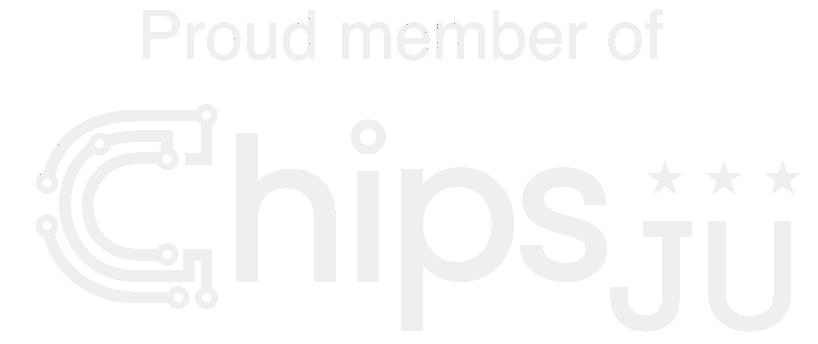Strengthening Europe’s Semiconductor Future in a Shifting Geopolitical Landscape

In response to rising geopolitical tensions and growing global competition, nine EU Member States—Austria, Belgium, Finland, France, Germany, Italy, Poland, Spain, and the Netherlands—have launched the Semiconductor Coalition, a strategic initiative to reinforce Europe’s technological sovereignty and economic resilience. Announced on the margins of the COMPET Council, the Coalition represents a landmark step in aligning national efforts to advance Europe’s competitiveness in the semiconductor sector.
The Coalition was launched in close coordination with the European Commission, which hailed the initiative as a strong commitment to building a more innovative, robust, and strategically autonomous semiconductor ecosystem. The Commission has already mobilized over €43 billion through the EU Chips Act, designed to stimulate research, production, and skills development in the semiconductor industry. This new alliance will contribute critical insights to shaping future policies and financing mechanisms.
“The EU must strongly enhance its cooperation. For the very first time, we have agreed to coordinate a joint approach for the semiconductor industry—including a common strategy to increase production capacity, invest in cutting-edge research, and develop a skilled workforce throughout Europe,”
Dirk Beljaarts, Minister of Economic Affairs of the Netherlands.
Semiconductors are the backbone of modern life—powering everything from artificial intelligence and aerospace to energy, defense, mobility, and communications. As such, ensuring Europe’s position in this strategic sector is not only an economic priority but also a matter of security and global relevance.
Geopolitics and the Semiconductor Imperative
The urgency of this initiative was underscored at the recent SEMI Industry Strategy Symposium Europe (ISS Europe)in Sopot, Poland, where Hendrik Bourgeois, Vice President of European Government Affairs at Intel, delivered a keynote outlining the pressing need for Europe to respond to the evolving geopolitical landscape with “strategic clarity and industrial focus.”
Bourgeois detailed how recent disruptions—including trade tariffs, political interference, and electoral manipulation—have forced Europe to reevaluate the reliability of its traditional alliances. In response, he laid out a four-part geopolitical strategy:

1 Strengthen Europe internally—particularly by implementing recommendations from the Draghi Report and investing in sectors like defense and energy.
2 Deepen economic ties with like-minded democracies—including the UK, Japan, South Korea, and Canada.
3 Engage pragmatically with China—balancing economic opportunity with strategic caution.
4 Maintain ties beyond Washington—by leveraging U.S. states, cities, civil society, and corporations as stabilizing transatlantic partners.
Brace for Impact: The “Three I’s” Strategy
Bourgeois emphasized that Europe’s ability to navigate this complex landscape hinges on a clear long-term strategy for semiconductors, built around three pillars: internationalism, innovation, and investment.
1. Internationalism
Rather than striving for complete self-sufficiency—which he called unrealistic and counterproductive—Bourgeois urged Europe to pursue strategic diversification.
“If Europe tries to be a jack of all trades, it will become the master of none”
Hendrick Bourgeois, VP Vice President of European Government Affair INTEL
He also highlighted the need for a unified EU-wide economic security strategy. Today’s patchwork of national rules on export controls and foreign direct investment is insufficient to address global challenges. Coordination and coherence are essential.
2. Innovation
“We don’t have natural resources in Europe, but what we have is brain power”
Echoing Commission President Ursula von der Leyen, who recently introduced the Competitiveness Compass, Bourgeois stressed the need to reignite Europe’s “innovation engine.” The EU, he noted, accounts for a comparable share of global patent filings as the U.S. and China—but fails to commercialize the majority.
He outlined four policy priorities to unlock Europe’s innovation potential:
- Finalize a Capital Markets Union to grow the venture capital ecosystem.
- Expand targeted tax incentives for R&D, building on successful models like France’s crédit d’impôt recherche.
- Increase EU research funding in the next Multiannual Financial Framework (2027).
- Adopt an industrial policy that rewards innovation, not just scale or incumbency.
3. Investment
Europe’s industrial future depends on large-scale investment in advanced manufacturing and infrastructure. Bourgeois warned that recent U.S. export controls on AI chips have unevenly affected EU member states, fragmenting the single market and undermining competitiveness.
He praised the EU Chips Act, but cautioned that it lacks the centralized financial muscle of its U.S. counterpart.
“The EU Chips Act facilitates national subsidies, but it does not create new funding. What we need is a truly European instrument to pool resources for large-scale investment,”
H.Bourgeois
Beyond funding, he identified structural barriers—such as high energy costs, rigid labor markets, and a lack of support for the broader semiconductor supply chain—as critical obstacles to address.

Europe’s Moment of Resolve
With public investment in semiconductors surging worldwide—from the CHIPS and Science Act in the U.S., to China’s Big Fund, and major initiatives in Japan, South Korea, and Taiwan—Europe cannot afford complacency. The Semiconductor Coalition, together with the European Commission, will act as a unified front to secure Europe’s place in the global semiconductor race.
By embracing Bourgeois’s “three I’s”—internationalism, innovation, and investment—Europe has the opportunity not only to withstand today’s geopolitical headwinds but to emerge as a leader in the technologies that will define the decades ahead.



Leave a Reply